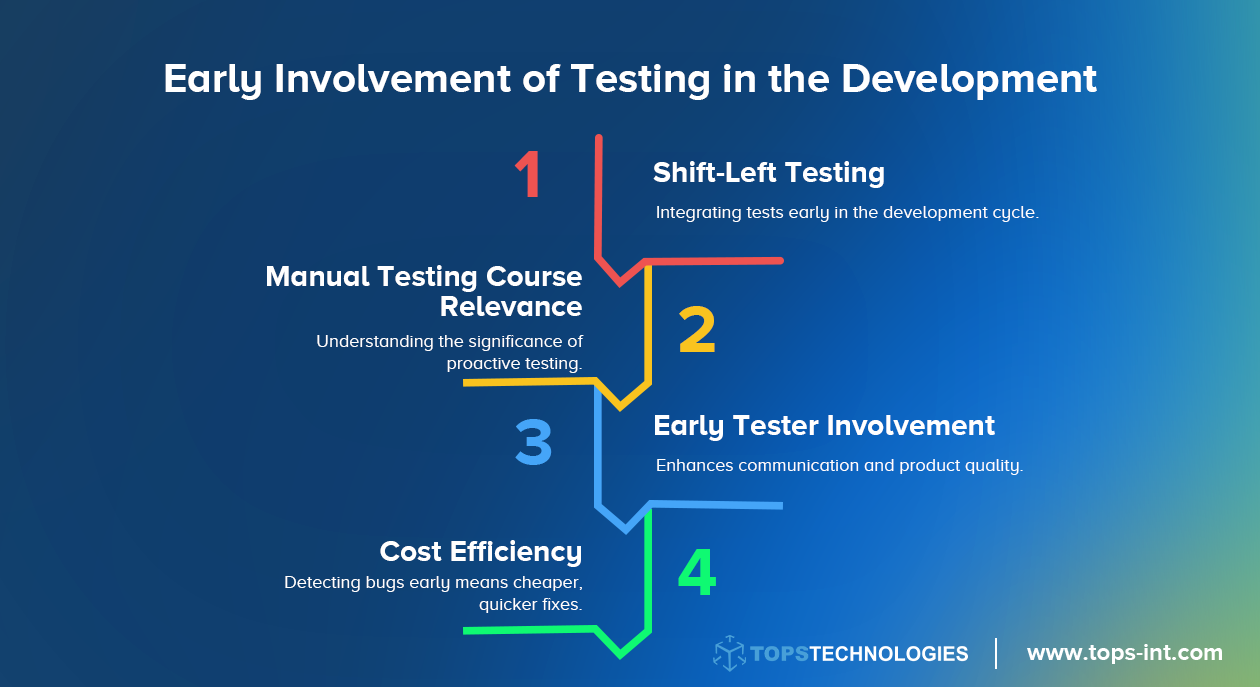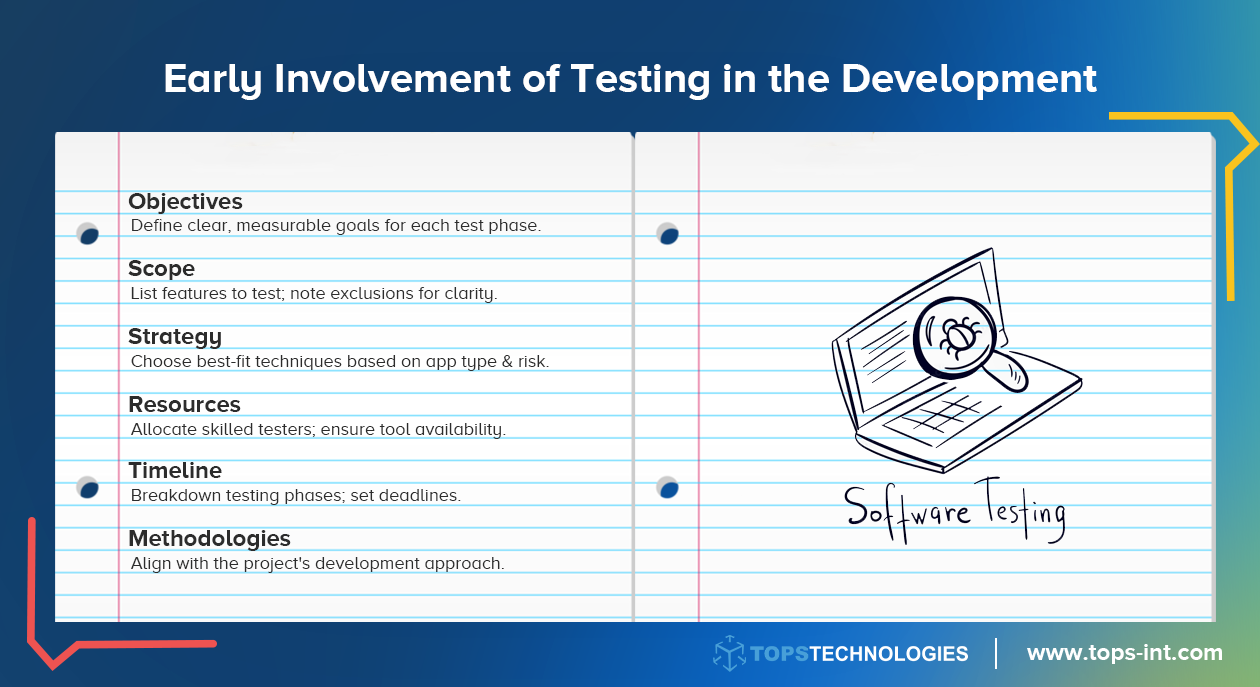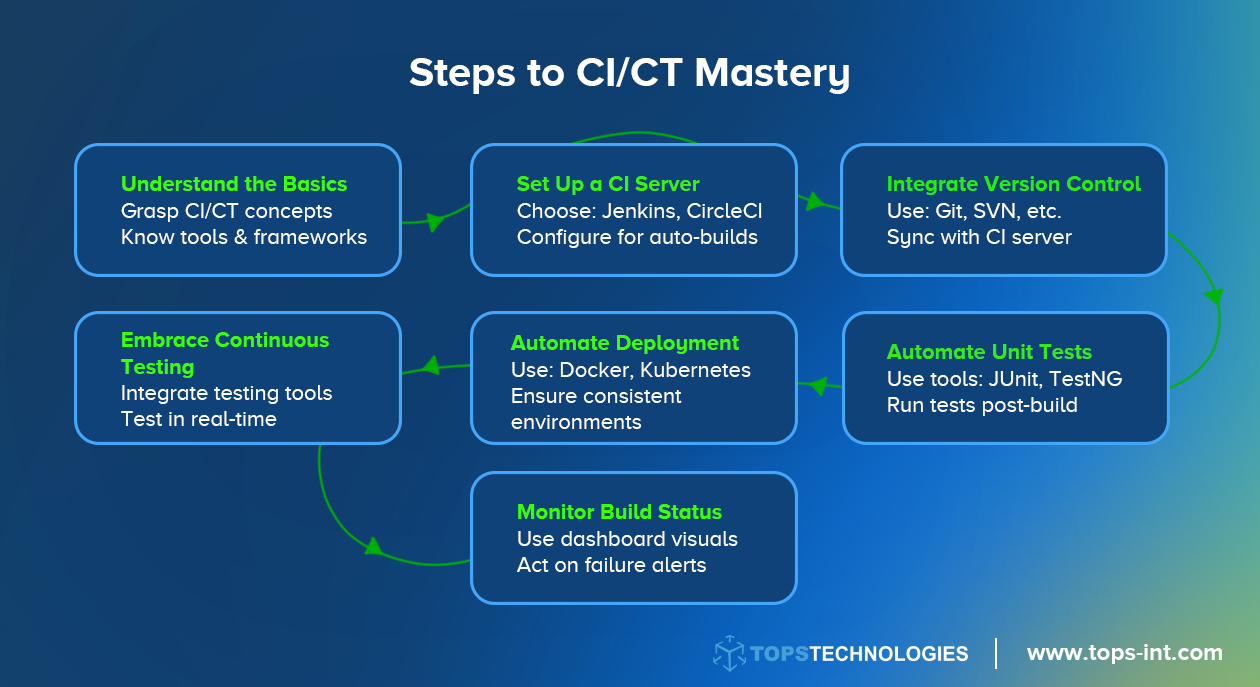For those who've embarked on a "Software Testing Course in Ahmedabad," you're already acquainted with foundational terms like SQ and SQC. But mastering the TESTING arena requires delving into specific strategies that can bolster effectiveness.
SQ is more than just a fancy term—it embodies the essence of software that meets or exceeds our expectations. But how do we ensure this quality?
That's where Software Quality Control (SQC) comes in:
- SQ: Think of this as the DNA of good software. It signifies the inherent attributes that make a software product meet specific criteria or benchmarks.
- SQC: This is the guardian of SQ. Through meticulous activities, SQC measures the software against set standards, ensuring it delivers as promised.
- TESTING: The heartbeat of SQC. By rigorously evaluating the software's behavior, testing ensures it operates without hitches and aligns with user needs.
While the methods and techniques might evolve, the commitment to quality remains unyielding. For those aiming to master the realm of software testing and quality assurance, securing an ISTQB certification is a step towards solidifying your expertise and standing tall in the industry.
Read More: Boost Your Career as a Software Tester: Get ISTQB Certification!
Best Practices for Software Testing
Here are the best practices for software testing:
Early Involvement of Testing in the Development Cycle

As the tech landscape evolves, so does the emphasis on weaving testing into the earliest stages of software development, a paradigm shift often termed "Shift-Left" testing.
- The Proactive Approach: Rather than retrofitting solutions to existing problems, this strategy focuses on preventing issues from arising.
- Course Integration: Manual testing courses nowadays stress the significance of early quality checks, teaching budding testers the nuances and importance of this proactive methodology.
Explaining the Concept of "Shift-Left" Testing
Moving away from mere terminology, "Shift-Left" encapsulates a fundamental change in the software testing approach.
- Testing Throughout: It's not just about the end game. Testing initiates right from the requirements-gathering phase, permeating through design, development, and deployment.
- Collaborative Synergy: Merging the developers' and testers' worlds from the project's onset ensures they work in harmony, preempting issues rather than just pinpointing them.
Benefits of Involving Testers Early in the Development Process
Inviting testers to the initial party isn't a mere formality. It revolutionizes the development outcome.
- Crystal Clear Communication: Misunderstandings and misinterpretations, common culprits of software glitches, are drastically reduced.
- Foundation of Quality: Instead of attempting to embed quality at the tail end, the product is constructed with quality ingrained in its very DNA.
How This Approach Reduces Costs and Identifies Issues Sooner
Spotting and resolving issues at their budding stage doesn't just elevate product quality; it's a masterstroke of cost-efficiency.
- Simple Fixes: The earlier a problem is detected, the simpler, and thereby cheaper, it is to rectify.
- Avoiding the Snowball Effect: Resolving minor issues, in the beginning, prevents them from snowballing into colossal challenges later, saving both time and resources.
Clear and Comprehensive Test Planning

Navigating the maze of software development without a well-thought-out test plan is like embarking on a road trip without a map. And as we learn in software testing fundamentals in software engineering, a detailed test plan is pivotal.
The Significance of a Well-Defined Test Plan
A test plan isn't just another document; it's the compass directing the testing team.
- Guided Focus: Ensures that the testing team knows exactly what needs testing and what doesn't.
- Risk Management: Anticipates potential challenges and paves the way for mitigation strategies.
- Efficiency Boost: Reduces wasted efforts and directs resources where they're most impactful.
Key Elements of a Test Plan
A well-structured test plan isn't a monolithic entity; it's a composite of several critical components:
- Objectives: Clearly articulate what the testing aims to achieve.
- Scope: Demarcates the boundaries of testing, deciding what's in and what's out.
- Test Strategy: A blueprint of how testing will be carried out.
- Resources: Outlines the tools, personnel, and infrastructure needed.
- Timeline: Sets the pacing, with start and end dates and perhaps even milestones.
Adapting the Test Plan to Different Project Methodologies
Every project is a unique entity with its methodologies and rhythms. The test plan must adapt.
- Agile: Testing is continuous and iterative. The plan needs flexibility, as requirements can change swiftly.
- Waterfall: More linear and structured. The test plan is often comprehensive from the start, with fewer changes expected.
In the field of software testing fundamentals in software engineering, a robust test plan stands as a foundational pillar. It doesn't just guide the testing process but ensures that it aligns perfectly with the overarching project goals, ensuring clarity and efficiency throughout.
Test Automation Implementation
Dipping one's toes into the vast pool of test automation can initially feel overwhelming. Yet, it's a step forward that yields significant rewards. A glance at any automation testing courses for beginners reveals the growing importance and benefits of this approach.
Advantages of Test Automation
The beauty of test automation lies not just in its efficiency but also in its consistency. Automated tests are not just faster, but they ensure repeated tests are performed with the same precision each time.
- Speed Surge: The sheer pace of automated tests translates to quicker feedback, propelling project momentum.
- Consistency Cloak: Every repetition is identical, eliminating the variability of human error.
- Efficiency Elevation: Manual testers can channel their skills toward intricate test scenarios, maximizing their expertise.
Read More: What is the Difference between Manual and Automation Testing
Identifying Test Cases for Automation
Choosing the right test cases for automation is a game of strategy. Every test case doesn't fit the automation mould.
- Repetitive Routines: Tests that are frequently executed are automation's best friends; they ensure maximum efficiency.
- Stable Scenarios: Consistent, seldom-changing test scenarios are automation gems, ensuring a reliable return on investment.
- High-Risk Regions: The critical pathways where mistakes are costly benefit immensely from the surety of automation.
Choosing the Right Automation Tools & Frameworks
The world of automation tools and frameworks is vast, and your choices can shape your automation journey's success.
- Project Fit: Tailoring tools to project type (web, mobile, etc.) can make all the difference.
- Language Link: Seamless integration is easier when the tool supports your project's predominant language.
- Community Counts: A robust user community often translates to invaluable support and insights.

Balancing Act: Automated vs. Manual Testing
It's not a battle between automated and manual testing; it's a dance. Knowing when to lead with one or the other is crucial.
- Automation Aces: Let the machines handle the heavy, repetitive lifting, ensuring speed and precision.
- Manual Mastery: Complex, nuanced scenarios often require the human touch, leveraging insight and adaptability.
With automation becoming a cornerstone of modern testing, embracing it is no longer optional.
it's
You can take the certification at the ISTQB foundation - US level, which acts as a stepping stone for testers. As you progress, various ISTQB certification levels delve deeper, enhancing your proficiency.
Unlock new career heights in software testing with ISTQB Certification! Dive into specialized training and stand out in the competitive IT landscape.
Effective Test Case Design

Designing an effective test case isn't just about pinpointing defects; it's about crafting a clear, concise blueprint that considers all possible scenarios. A well-constructed test case can save countless hours by identifying issues early and ensuring a seamless user experience.
Key Elements of Robust Test Case Design
- Objective: Clearly define what the test aims to achieve.
- Pre-conditions: List any requirements or conditions that must be met before testing.
- Steps: Detail every action that needs to be taken.
- Expected Outcomes: Describe the expected result or behaviour after the test steps are executed.
- Post-conditions: State the system status after the test has been executed.
If you're just stepping into this realm, consider enrolling in
Automation Testing Courses for Beginners. Such courses often delve deep into test case design, emphasizing its role in effective automation.
Pro Tip for Beginners
- Be Dynamic: As software evolves, so should test cases. Regularly review and refine them to stay relevant.
- Tools Can Help: Utilize tools that aid in test case management, allowing for better organization and execution tracking.
Achieving the ISTQB certification can significantly boost your career in software testing. Being an ISTQB-certified tester showcases your commitment and expertise in the domain.
Continuous Integration and Continuous Testing
The software development landscape is evolving rapidly, pushing teams to deliver faster without compromising on quality. Enter Continuous Integration (CI) and Continuous Testing (CT) – a duo that ensures rapid releases while keeping bugs at bay.
Continuous Integration (CI): An Introduction
- What it is: CI is the practice of frequently integrating code changes into a central repository, usually multiple times a day.
- The Upside: Catching integration issues early, reducing last-minute chaos, and ensuring a smoother release process.
Continuous Testing (CT): Testing Evolved
- Not Just Automated Testing: While automation is a component, CT is about ensuring every change is tested in real time throughout the development pipeline.
- Real-time Feedback: Developers get instant feedback on their changes, helping them spot and fix issues early.

The CI/CT Synergy
- Hand in Hand: CI sets the pace, and CT ensures the quality keeps up.
- End-to-End Automation: From code integration, and automated testing to deployment, everything is streamlined.
If you're serious about mastering these and looking for practical exposure, consider enrolling in a
Software Testing Course with a Job Guarantee. Such courses not only provide hands-on experience but also offer the confidence of employment opportunities post-completion.
Conclusion
In the bustling world of IT, having a trusted partner for training can make all the difference. That's where TOPS Technologies comes into play. With an impressive legacy of
15 years in the
IT Training and placement industry, we've become synonymous with excellence. Over
1 Lac students have transformed their careers thanks to TOPS' exceptional courses like
Software testing courses, mobile development courses, etc.
But what truly sets us apart? It’s our expansive network. A whopping tie-up with
3000+ companies ensures that students don't just learn – they get placed in renowned firms. Moreover, accessibility is never an issue. With
19+ offices sprawled across India,
TOPS Technologies ensures every aspirant can reach them without a hitch.
FAQ
What are the core best practices in software testing?
Employing a systematic approach, continuous integration, test automation, and feedback loops are among the essential practices to enhance the testing process.
How can I integrate testing early in the development cycle?
This can be achieved through "Shift-Left" testing, which involves testers right from the requirement analysis phase.
Are automated tests always better than manual tests?
Not always. While automation can speed up repetitive tests, manual testing remains crucial for exploratory, usability, and ad-hoc testing scenarios.
How can continuous integration benefit software testing?
Continuous integration facilitates frequent code integrations, allowing testers to detect and address issues early and enhancing software quality.
What role does ISTQB Foundation - US play in software testing best practices?
The ISTQB foundation level offers foundational knowledge and standards for software testing, setting the benchmark for best practices in the industry.










